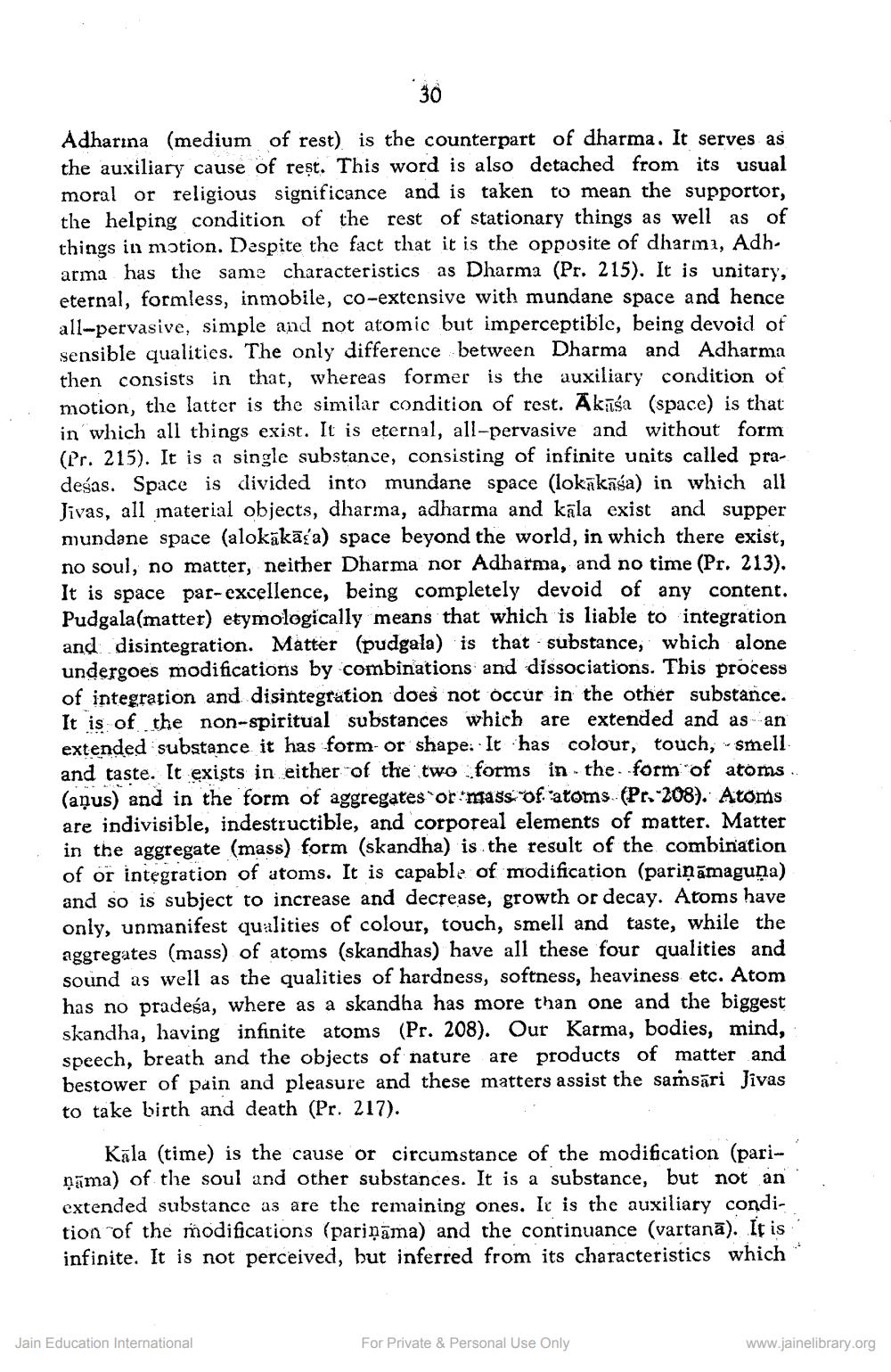________________
30
Adharına (medium of rest) is the counterpart of dharma. It serves as the auxiliary cause of rest. This word is also detached from its usual
al or religious significance and is taken to mean the supportor, the helping condition of the rest of stationary things as well as of things in motion. Despite the fact that it is the opposite of dharmı, Adbarma has the same characteristics as Dharma (Pr. 215). It is unitary, eternal, formless, inmobile, co-extensive with mundane space and hence all-pervasive, simple and not atomic but imperceptible, being devoid of sensible qualities. The only difference between Dharma and Adharma then consists in that, whereas former is the auxiliary condition of motion, the latter is the similar condition of rest. Akīša (space) is that in which all things exist. It is eternal, all-pervasive and without form (Pr. 215). It is a single substance, consisting of infinite units called pradesas. Space is divided into mundane space (lokākāśa) in which all Jivas, all material objects, dharma, adharma and kala exist and supper mundane space (alokākāça) space beyond the world, in which there exist, no soul, no matter, neither Dharma nor Adharma, and no time (Pr. 213). It is space par-excellence, being completely devoid of any content. Pudgala(matter) etymologically means that which is liable to integration and disintegration. Matter (pudgala) is that substance, which alone undergoes modifications by combinations and dissociations. This process of integration and disintegration does not occur in the other substance. It is of the non-spiritual substances which are extended and as an extended substance it has form-or shape. It has colour, touch, smell and taste. It exists in either of the two forms in the form of atoms. (aņus) and in the form of aggregates or mass of atoms (Pr. 208). Atoms are indivisible, indestructible, and corporeal elements of matter. Matter in the aggregate (mass) form (skandha) is the result of the combinat of or integration of atoms. It is capable of modification (pariņāmaguna) and so is subject to increase and decrease, growth or decay. Atoms have only, unmanifest qualities of colour, touch, smell and taste, while the aggregates (mass) of atoms (skandhas) have all these four qualities and sound as well as the qualities of hardness, softness, heaviness etc. Atom has no pradeśa, where as a skandha has more than one and the biggest skandha, having infinite atoms (Pr. 208). Our Karma, bodies, mind, speech, breath and the objects of nature are products of matter and bestower of pain and pleasure and these matters assist the samsäri Jivas to take birth and death (Pr. 217).
Käla (time) is the cause or circumstance of the modification (pariņāma) of the soul and other substances. It is a substance, but not an extended substance as are the remaining ones. It is the auxiliary condition of the modifications (pariņāma) and the continuance (vartanā). It is infinite. It is not perceived, but inferred from its characteristics which
Jain Education International
For Private & Personal Use Only
www.jainelibrary.org




